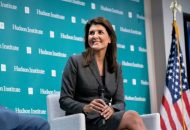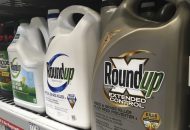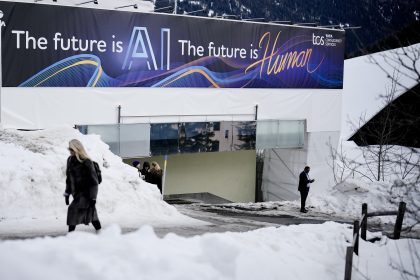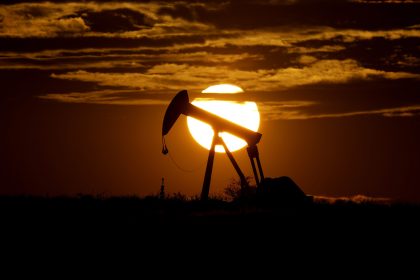Solving Agriculture’s Climate Footprint
COMMENTARY | The Ecomodernist

According to a popular proverb, the best time to plant a tree was 20 years ago. The second best time is now.
Like planting a tree, governments should have funded large-scale research and development 20 years ago to better address the food system’s sustainability challenges. They still can and they still should.
Popular proposals to cut food’s large environmental footprint rest on the idea that we have all the technologies and information we need. All we need is to pay farmers to store carbon in the soil, stop eating meat, and convert farms to organic. At best these ideas are insufficient; at worst they’re counterproductive.
Food and farming has an outsized environmental footprint. The transport, storage, disposal, and — most especially — the production of food account for nearly 25% of U.S. and 33% of global greenhouse gas emissions. Water pollution from manure and fertilizer runoff, which can lead to dead zones in fresh and marine water bodies, costs the U.S. public tens to hundreds of billions of dollars per year. And gaseous ammonia emissions from manure and fertilizer are responsible for about one-fifth of air pollution deaths in the US.
Food’s impacts are only expected to rise as global food demand grows. If current trends continue, greenhouse gas emissions from agriculture will dramatically increase by 2050. More land will also be needed to feed everyone sufficient, nutritious and culturally appropriate food. By one estimate, an area of forest, savanna, and other land nearly twice the size of India could be put under the plow in coming decades.
Many of the most popular proposals to make the food system more environmentally sustainable don’t address these challenges, however. Some would even exacerbate them. For example, offsetting greenhouse emissions by paying farmers to store carbon in soil lets companies off the hook for reducing their own emissions while failing to guarantee that carbon will stay in the soil. Some farm practices to store carbon even reduce crop yields, further increasing farming’s land footprint. A large-scale conversion to organic production, as envisioned by many advocates and some legislative proposals such as the Agricultural Resilience Act, would require dramatically more farmland, driving deforestation and other types of land use conversion. And, efforts to nudge people to eat less meat — for example, through “Meat Out” days — have blown up in politicians’ faces, from Colorado to France, in part because it threatens farmers’ and livestock producers’ income.
Investing in agricultural research, on the other hand, cuts food’s environmental footprint, helps meet growing global food demand, and boosts farmers’ bottom line. Publicly funded agricultural R&D, primarily conducted in universities and government institutions, is a major source of new agricultural technologies and knowledge. It has been and will continue to be key to making farmers more productive, enabling them to produce more food with less land, fertilizer, fuel and other inputs.
Agricultural productivity growth has large domestic benefits. For instance, advances in dairy science enabled U.S. milk production to increase 25% since 2007 while land use, greenhouse gas emissions, and manure production per gallon of milk all fell about 20%. Making U.S. producers more efficient also makes them more competitive globally. That expands exports — a priority for farm groups — and is environmentally beneficial since the impact of many U.S. products is smaller than those produced in other countries. The carbon footprint of a pound of U.S. beef, for example, is about half the global average.
But the climate benefits of R&D extend beyond our borders. American agricultural discoveries and innovations are shared globally, helping scientists and farmers in other major agricultural regions shrink their footprint. Farmers in Brazil, for instance, have widely adopted herbicide- and insecticide-tolerant soybean, which was developed based on basic science funded by U.S. federal agencies.
The total benefits of increasing public agricultural R&D are dramatic. Agricultural economist Uris Baldos and I show in a new paper that doubling public R&D spending would reduce land use over 40 million acres, about the size of Iowa; cut GHG emissions over 100 million tons per year; and more than double U.S. crop exports by 2050, compared to business-as-usual funding.
New research could advance a wide array of emerging fields with large, but risky and long-term payoffs that the private sector has little incentive to invest in. Scientists have discovered promising genetic pathways to make photosynthesis more efficient and increase crop growth perhaps as much as 40%. Government research could tackle the long-term and risky challenge of producing low-cost, low-impact and high-quality cultivated (aka lab-grown) meat. And there are many opportunities to advance research on low-emission fertilizers, particularly given the miniscule amount the fertilizer industry spends on R&D.
Yet funding for U.S. public agricultural R&D has stagnated in recent decades. This is in sharp contrast with funding growth in other regions, particularly China, where total public agricultural R&D has surpassed that of the U.S. since 2008.
An ambitious research agenda could include doubling funding of programs like AFRI, the Department of Agriculture’s flagship grants-making program, as well as the Agriculture Research Service, the federal government’s own research arm. But it’s not just enough to fund research. For research to be successful, scientists need adequate facilities. There’s a multi-billion dollar facility maintenance backlog, preventing researchers from doing their best work.
Fundamentally, R&D should be central to any proposal for agricultural climate mitigation. Support for agricultural R&D has long been bipartisan, benefitting rural farmers and ranchers, urban consumers, and the environment alike. It may take years for investments in R&D to pay off. But as with planting a tree, that only makes taking action more urgent.
Daniel Blaustein-Rejto is the Director of the Food and Agriculture program at the Breakthrough Institute, a Berkeley-based research center promoting technological solutions to environmental and human development challenges in energy, conservation, and agriculture. You can follow him on Twitter @danrejto.
























